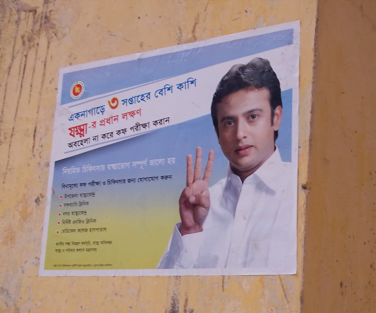Anowara Upazilla, Bangladesh – Compared to HIV/AIDS and Malaria, TB is by far the most prevalent infectious disease in Bangladesh. There are an estimated 426 infections per 100,000 people among a population of 148 million. An estimated 65,000 people died from TB infections last year alone.
That is bad. But a TB diagnosis these days is not necessarily a death sentence. In 2003, The Global Fund to Fight AIDS TB and Malaria provided a $45 million grant to seed the creation of a national TB control program for Bangladesh. Here in the village of Anowara the benefits of this campaign are very clearly evident.
Anowara has a population of 1,800. It is about an hour drive from the city center of Chittagong, a bustling port city of 10 million people. At the time of my visit, a health worker from the NGO the Bangladesh Rural Action Committee (BRAC) was holding a seminar on TB for about two-dozen village women. The health worker, also a woman, visits once a month for these information sessions. The basic message that the health worker emphasized is that if you have a cough lasting more than three weeks, you ought to give a sputum sample. That message was reinforced by this poster, which hung on the side of a building nearby.
At a small health clinic, trained workers collect sputum samples from people who are symptomatic. Someone from a nearby hospital regularly visits the village to pick up samples for testing. There, a lab technician examines the sample under a microscope to make a diagnosis. If the test is positive, a doctor on site prescribes a treatment regime of anti-retroviral therapy.
Here is where one of the key interventions occurs. Even though the drugs are free, the doctor cannot simply hand over the drugs to the patient. Under World Health Organization guidelines, TB must be treated through a regimen called Directly Observed Treatment, or DOTS. This means a health worker has to be physically present when a patient takes his or her medicine. If left to their own devices, patients sometimes stop treatment once their symptoms go away, but before they have actually been rid of the virus. A drug resistant strain of the virus can develop that is more expensive to treat and much more deadly.
The thing is, it is unreasonable to expect that villagers who live far from the hospital would have the means to make it there for observation. So, rather than have the villager go to the health system, the health system comes to her.
That happens through a local health worker called the a Shasto Shebika, which roughly translates as “health volunteer.” These are local women who serve as part nurse part social worker. They are respected members of the community in which they serve and are the key link between patients and the TB control program. When it is time to take the ARTs, the Shasto Shebika visits the patient in her home to dispense the medicine.
In this picture, the young woman on the left was recently cured of TB through the help of her Shasta Shebika, who is standing to the right. The man in the middle is the director of the nearby hospital in which the diagnosis was made and ARVs prescribed.
The education programs, the diagnosis and treatment are all part of a national TB control program that was seeded by a Global Fund grant. And here in Anowara, it is working. Since the program began in 2004, 17 people were diagnosed with TB. 16 were cured and one person is currently in treatment. On the national level 105,000 people were treated through the national program, with a fatality rate of 2-3%. This suggests that when patients are in they system, it works.
The big challenge now is for Bangladesh is to scale up efforts to reach patients through the National TB Control Program, particularly in fast growing urban centers like Dhaka and Chittagong. It is somewhat ironic, but because of the Shasto Shabika system, it is actually easier for the National TB Control program to reach rural villagers than city slum dwellers.
So, while the TB intervention has been successful so far, there is still a lot more work to do to fully control TB in Bangladesh. Something to chew on this International TB Day.


